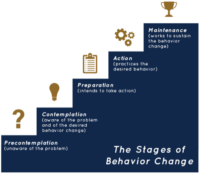COI POI ROI = Current Results
These four terms interact with each other to create and maintain an organization’s unique culture. Day-to-day operations, behaviors, ways of working, levels of performance, strategies and interactions between managers and staff occur as patterns-of-interaction (POI) within the context-of-interaction (COI). The COI is composed of the most visible part of an organization’s culture — its structures, systems and resources.
The interaction of POI and COI creates the group-history and group-learning that evolves into a repository-of-interaction (ROI). The ROI becomes the shared assumptions, beliefs, values and attitudes about what works (and doesn’t work) in an organization — the foundation of an organization’s day-to-day operations.
The outcomes you get
Over time, COI, POI and ROI adapt to the external environment in which they operate and produce the Current Results. Current Results reflect the overall cultural norms of “how work gets done around here.”1 Current Results emerge naturally as the indirect outcome of the interaction of the first three terms. Bodnarczuk draws upon David Hanna’s suggestion that “All organizations are perfectly designed to get the results they get! For better or worse, the system finds a way of balancing its operation to attain certain results.”2,3
An organization considering a transformation should view its day-to-day operations using the four terms as a “lens” to identify obstructions to organizational transformation.
Most people tend to shy away from change, so initiatives are directed at employing corrective action measures focused on the COI term, while ignoring the behaviors, ways of working, attitudes and beliefs associated with POI and ROI terms, which are integral to organizational and cultural transformation. As Bodnarczuk points out, placing attention on the COI term is necessary, but not sufficient to create a true organizational transformation.
Crucial transformation elements
Crucial to organizational transformation are change and transition. Change is relatively easy. It concentrates on functional silos being consolidated with new leadership, organization charts being redrawn so the right people work together on the right tasks and managers being directed to deliver on aggressive goals with fewer resources, etc.
Less easy is transition. This entails the behavioral and emotional processes individuals go through to learn new ways of working, while at the same time letting go of the old, familiar and comfortable practices they have been so invested in.4
Organizational transformation demands that you manage both change and transition throughout the entire process. Bodnarczuk provides examples of these elements being mismanaged. For example, too much change in too short a timeframe overwhelms individuals. Excessive change with limited transitional leadership is a recipe for disaster. Too little change over too long a period of time fatigues organizational morale and leads to people viewing these failed attempts as the “flavor of the month.”
The greatest challenge
Creating and sustaining a “Safety Culture” requires you to understand and control the migration of individuals’ ways of working (POI) from rule-based (formal, written) to skill-based (informal, unwritten). The “gap” between formal rules for how work gets done in an organization (COI) and the informal rules for how things “really get done” (POI) is one of the common causes of ineffective organizational performance.5
Using the Breckinridge Equation
Safety transformational efforts tend to start and stop with the COI term. But ask questions. What safety systems are in place and how are they utilized? Do the systems seek out root causes or root blame? Are safety resources competent to do safety work or are they individuals who have merely been assigned the safety role, along with myriad other roles?
Define your context-of-interaction (COI). Next, describe the patterns-of-interaction (POI). This includes the behaviors, tasks, actions, interactions, decision-making, ways-of-work, strategies, levels of performance and interactions between managers and staff members. Look for tasks, behaviors, actions and interactions that have migrated from being done with intensive attention to unconscious autopilot operations performed out of habit.
Are skill-based activities being performed without conscious thinking?
You can either observe the activities being performed or interview individuals who perform the activities. Don’t fall prey to conducting observations or interviews in the context of auditing performance against the written procedures. Seek to understand how individuals really perform the work using their unwritten procedures. Safety is all about what workers do when no one is looking; use your interpersonal skills to gain your workers’ trust to learn how they really work. And don’t twist yourself around the axle because your workers are ignoring some safety procedure you may have authored.6
Next, define the repository-of-interaction (ROI). This is the collective repository of group history and group learning. What are the assumptions, beliefs, values and attitudes about what works and doesn’t work?
Questions might include: 1) What is the operational philosophy and historical foundation upon which safety decisions are made; 2) What behaviors and attitudes actually get rewarded or are discouraged; and 3) What do people actually think, feel, believe and assume, but do not say publicly? The ROI includes the history of financial and non-financial performance; key events, stories, and heroes; prohibitions; rituals, ceremonies, traditions; and “folk wisdom” about how things should or should not be done.7
Finally, current results identify the actual financial and non-financial results of the enterprise. As Bodnarczuk states, current results emerge as the indirect outcome of the interaction of the first three terms of the Breckenridge Equation.
A leader’s ability to create, manage or transform his or her organizational safety culture requires a deep operational knowledge and understanding of the interaction of all four terms. Always remember that organizations are collective cultural entities that are led, managed and changed, one person at a time.8
Resources
1 Bodnarczuk, M. 2013. Why the Prevailing Wisdom on Change within the DOE/NNSA Nuclear Weapons Complex Won’t Produce Organizational Transformation. Breckenridge Consulting Group, Inc. Breckenridge, CO.
2 Hanna, D. 1988. Designing Organizations for High Performance. Addison-Wesley Publishing Company. New York, NY.
3 Bodnarczuk, M. 2013. A Precision Model for Organizational Transformation Within the DOE/NNSA Nuclear Weapons Complex. Breckenridge Consulting Group, Inc. Breckenridge, CO.
4 Ibid. pp. 2.
5 Ibid. pp. 4-5.
6 Ibid. pp. 4.
7 Ibid. pp. 5.
8 Bodnarczuk, M. 2009. Making Invisible Bureaucracy Visible: A Guide to Assessing and Changing Organizational Culture. Breckenridge Press. Boulder, CO.



